What do starlings eat? How do you differentiate between males and females or even the young? We answer these and other questions about the star in our large species portrait.
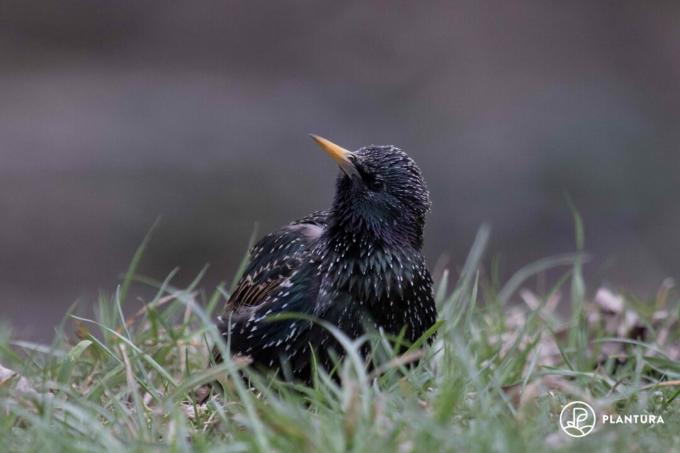
The common star (Sturnus vulgaris) is a common bird in the truest sense of the word. Because it is not only a frequent visitor to our parks and gardens, but is also one of the most widespread and most common bird species in the world. Its shimmering plumage, the large song repertoire and the elegant swarm formations make it a real "star" among songbirds. However, all of that could soon change. Because the stocks of the star have been falling sharply for several decades. Due to the increasing intensification of agricultural areas and the use of pesticides, the star is gradually losing its habitat and its food base. In the meantime, the species has even been classified as "endangered" on the red list in Germany. To draw attention to this dramatic development, the star was voted "Bird of the Year 2018".
contents
- Profile of the star
-
This is how you recognize the star
- How does the singing of the star sound?
- What does a young star look like?
- How do you recognize the star's eggs?
- How do females and males differ in the star?
- Where do the birds live?
- Where and how does the star build its nest?
- When do starlings have breeding season?
- What do starlings do in winter?
-
This is how you can support the common star in the garden
- What do starlings eat?
- Which nest box is suitable for the star?
- How can you give him additional support?
Profile of the star
| size | About 21-22 cm |
| weight | About 70 - 90 g |
| Breeding season | March - June |
| lifespan | About 3 years |
| habitat | Grasslands or lawns with adjacent tall trees |
| Feed preference | Worms, spiders, insects |
| Threats | Agricultural intensification and use of pesticides |
This is how you recognize the star
The appearance of the star can vary greatly depending on the incidence of light. From a distance and in shady places, the star appears at first glance like a simple, black bird with a yellow beak and can therefore quickly with a blackbird be confused. But if you invest a second look, you will quickly see the difference: The plumage of the star is covered with white speckles and shimmering in the sun in metallic green, blue, and Shades of purple. The shape of the star is also rather short-tailed and the blackbird's typical hopping locomotion is missing. In flight, the star can also be recognized by its pointed wings.
In fact, the star owns two different feather dresses, which he shows off depending on the season. In spring he shows himself in a noble, black dress with colored shimmer, pale, light spots and a bright yellow beak tip. In winter, on the other hand, it wears the so-called plain dress, which has a rather gray-brown note, a dark beak and strongly pronounced, light points.
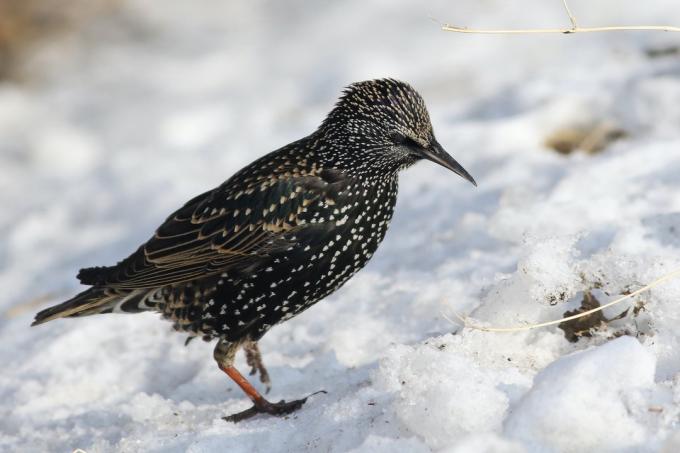
How does the singing of the star sound?
The star is an extremely creative singer. His varied singing consists of loud, drawn-out whistles, chattering elements and a number of fabulous imitations - voices from other birds, such as Magpies or birds of prey, the sounds around them, and even the ringing of cell phones. In addition, the star has numerous other bird calls, such as the hoarse warning call made at the nest: "Stääh".
You can listen to the star singing here:
What does a young star look like?
Young starlings are nowhere near as gorgeous as their parents. Free-flying young birds are already characterized by the finished size and shape of the starlings and the long, pointed beak. This is dark in color and therefore goes well with the monotonous gray-brown plumage. However, the young starlings change very quickly into the adult plain dress and show themselves in fully colored plumage in the first winter.

How do you recognize the star's eggs?
The female lays four to eight light green to light blue, monochrome eggs about 3 centimeters in size. These are embedded in a loose nest made of dry stalks, leaves and roots, which is padded with fresh green, feathers and animal hair. Woven herbs, whose essential oils serve as a natural defense against mites and bacteria and thus promote successful rearing of the young, are also particularly popular.
How do females and males differ in the star?
The difference between males and females is only visible in starlings in their splendid plumage. While the males show a dark, shiny metallic breast, that of the females has a few, bright spots. In addition, the females have a monochrome yellow beak with a base that is only slightly lighter, while the males have a distinct gray-blue beak base.
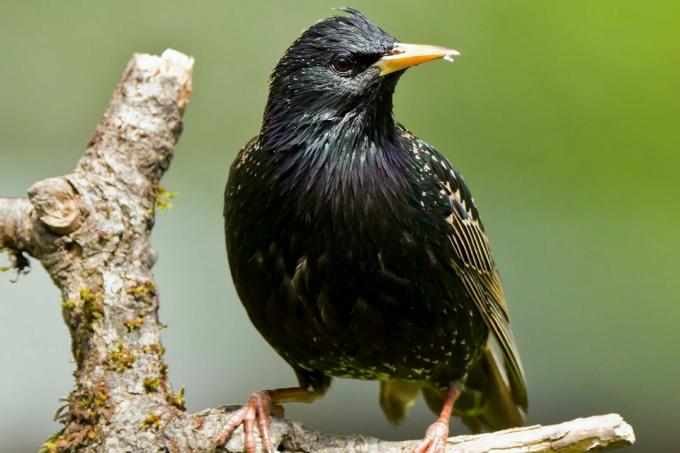
Where do the birds live?
The distribution area of the star extends over large parts of Europe and Asia to northwestern Mongolia. The species was also introduced in North America, where it colonized almost the entire continent, in small parts of South Africa and South Australia and in New Zealand. Starlings use a wide range of semi-open habitats, such as light forests, cultivated landscapes, settlements and even city centers. Short-grassed areas for foraging and trees with caves or other nesting options are important to them.
Where and how does the star build its nest?
As a cave breeder, the starling prefers to build its nest in natural tree hollows. Today, however, in adaptation to human habitats, it also uses a number of other cave-like structures, such as building niches or nesting boxes. With the construction of the nest, the male begins first in order to attract a female. When a couple has finally found each other, they finish the nest together.
When do starlings have breeding season?
The females lay their eggs between mid and late April. This is followed by an incubation period of 11 to 13 days. After hatching, the young birds develop in their nests for three weeks and are fed by their parents around the clock during this time. Then they leave the nest and are provided with food by the adult animals for a while. Although the females usually only raise one clutch per season, the males often look for a second partner in order to start another brood with this one.
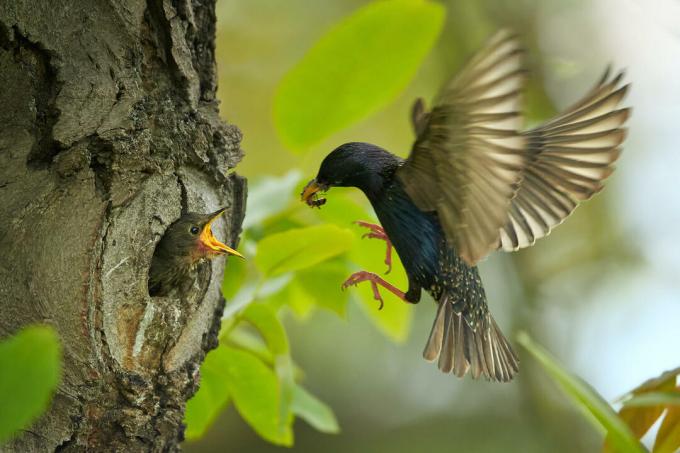
What do starlings do in winter?
Our domestic starlings spend the winter in the warm Mediterranean region, but they are one of the first species to return to their breeding grounds as early as February. Nevertheless, starlings can also be observed in Germany in winter. These are then mainly winter guests from more northerly regions. Although starlings breed in pairs, they travel in large groups of up to several thousand individuals for the rest of the year. They are particularly known for their synchronized flight maneuvers, which create fascinating swarm formations.
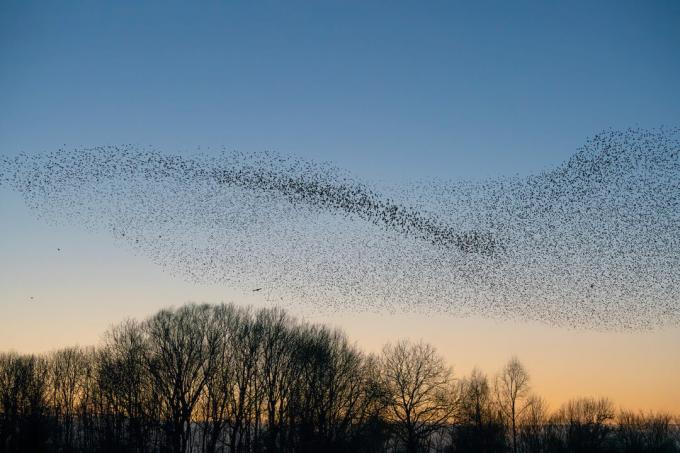
This is how you can support the common star in the garden
The progressive loss of habitat, food and nesting opportunities means that starlings are increasingly dependent on our support. By promoting structurally rich cultural landscapes and less intensively used agricultural areas, one automatically advocates the protection of starlings. If you want to help a little more specifically and want to offer the local songbirds a home in your own garden, you will find concrete options here.
What do starlings eat?
Starlings feed primarily on worms, spiders, insects, and snails, which they look for in the short grass. However, they also use berries, fruits and seeds and are therefore real “omnivores”. If you want to feed something in winter, you don't need to get any special food. The songbirds use normal soft feed mixes, nuts and fruit. Our Plantura year-round bird food For example, it contains a lot of rich seeds, berries and even mealworms and is therefore ideally suited for starling feeding. Due to its extra load of proteins, an addition of feed lime and the beak-friendly components, it is also suitable for year-round feeding.
If possible, the food should be placed in such a way that it is protected from rain and the birds cannot sit in it and contaminate it with their droppings. You can find more practical tips on building, placing and cleaning a feeding station in our special article on the subject of "Build bird feeder yourself“.
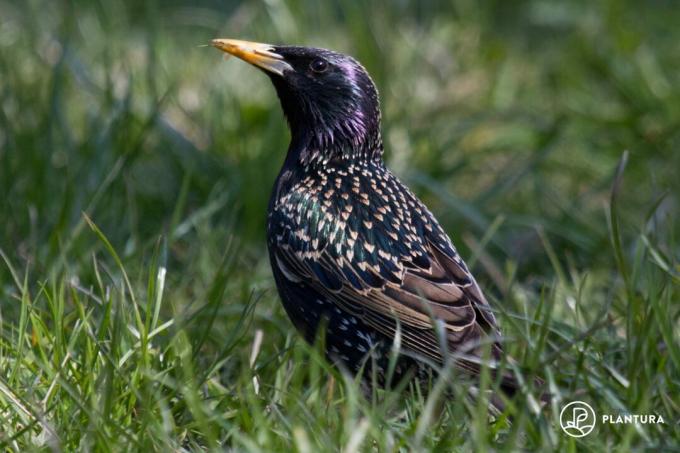
Which nest box is suitable for the star?
As cave breeders, starlings prefer full-cave nesting boxes with a small, round entrance hole with a diameter of 45 mm. These artificial nesting aids are astonishingly well received by the iridescent birds and it is therefore really worth building a starling box. Everything about the right wood, the right positioning and simple assembly instructions can be found in our special article on the topic of "Build your own nest box“.
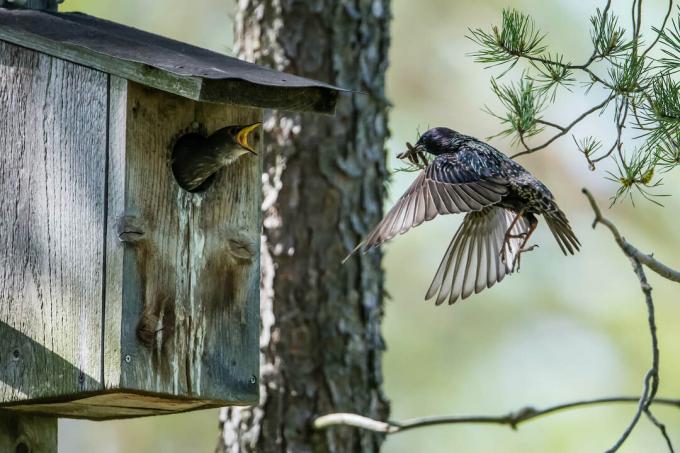
How can you give him additional support?
If you want to provide enough food in summer as well as winter feeding, you can encourage the natural supply of insects and small animals in your garden. That goes through a number of both bird-friendly plants as well as a healthy soil climate. Since starlings like to look for worms and other small animals in the ground, an active bottom fauna is important for the brilliant singers. With the help of our Plantura organic soil activator you can breathe a healthy soil life into your garden and thus in a sustainable and environmentally friendly way Wise not only do something good for your plants, but also a living space for a lot of small garden visitors Offer.
On hot days, starlings also look forward to a refreshment in the form of a Bird bath or a bird bath. Both can be easily constructed from a trivet or a flat bowl, because there is no real difference between the two objects. You do the same to all other garden birds, such as the one Blackcap or that Chiffchaff, something good.

